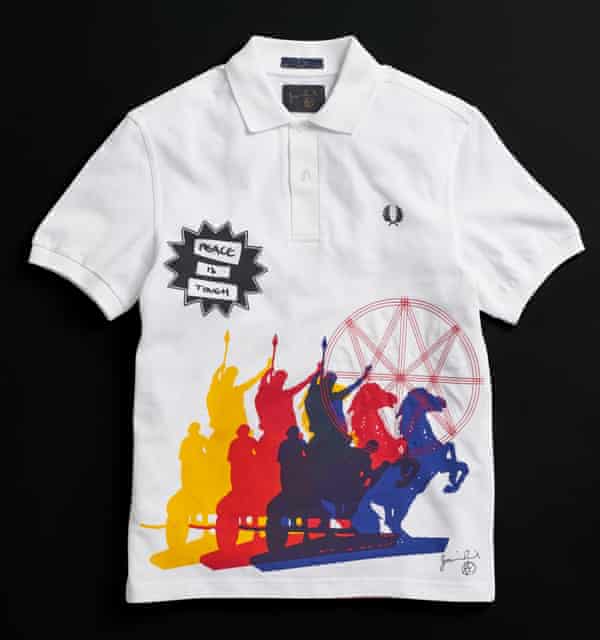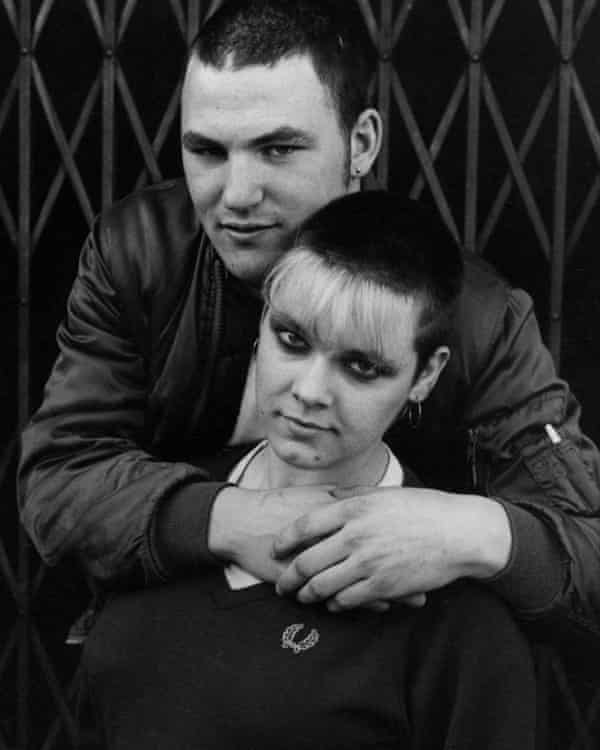
When tennis star Fred Perry launched his polo shirt in the 1950s, it was designed to be worn on court. Little did he think it would become part of British cultural history, yet over the decades it has been worn by everyone from mods to ska fans, fashionistas and pop stars.
“So many people have worn the Fred Perry shirt,” says Dominique Fenn, the company’s brand editor. “Sometimes, when you go to a gig, it’s not just the people on stage wearing it, it’s the roadies, it’s the guy behind the bar, it’s the crowd. In my first couple of weeks at Fred Perry, we did a live gig with the Specials, and, honestly, I felt like I’d joined a cult. It was that bizarre.”
Next month, the laurel wreath-logoed polo shirt celebrates its 70th anniversary with a new exhibition, Fred Perry: A British Icon, at the Design Museum. As the exhibition demonstrates, such popularity is not restricted to Specials gigs – or even to music. “You’re equally likely to see a grime artist wearing it as you are someone into 1960s R&B or indie music, as well as across the football terraces,” says Liza Betts, a lecturer at London College of Fashion, UAL. Betts adds: “It works across generations. My 80-year-old dad wears it, as does my teenage daughter and her friends.”
Simple design belies the shirt’s complex history. “It’s been appropriated and re-appropriated and rejected and appropriated again,” says Betts, “and at each point, its mythology gains more traction. Each generation, it gets taken up by somebody who is a symbol of cool – Paul Weller, Amy Winehouse, Arctic Monkeys, and it speaks to new people and gets adopted again.”
It wasn’t the first, or only, polo shirt with a cool logo – the French tennis player René Lacoste launched his version in 1933, and the American fashion designer Ralph Lauren in 1972. So what did Perry, the three-times Wimbledon champion, bring to the style when he launched it in 1952?
First, there’s the logo, the symbol of victory – “a kind of branding that allows the consumer to reinterpret that meaning within their own lives”, says Maria McLintock, the exhibition’s curator – whether you’re “playing tennis, headlining a festival, attending a gig, or going to a job interview”.
Perry’s own victories – his eight grand-slam wins make him the most successful British tennis player of all time – were all the more impressive given that he was self-taught. As the son of a Stockport factory worker turned Labour MP, “he wasn’t from a middle-class or wealthy background”, says Betts, “and yet he managed to become very successful in a sport that has a very particular kind of class dynamic. So there’s a mythology around that, too.” (That he dated several Hollywood stars, including Marlene Dietrich and Jean Harlow, can’t harm the brand message either.)
It was that “working class made good” spirit, as Betts puts it, that appealed to the 1960s mods. These young, white working-class men wore the shirt buttoned up to the top, with tight jeans and boots, to which was soon added the skinhead haircut. “The Fred Perry shirt fits the mod brief of ‘clean living under difficult circumstances’ perfectly,” says Betts. “It looks smart and neat, but it’s affordable, it’s achievable.”
McLintock says she “dug and dug” to uncover when the mods first adopted the top: “The Flamingo club in Soho was around the corner from Fred Perry’s first head office. The legend goes that a group of mods broke in, stole some polo shirts, and distributed them among their group. And the rest is history.”
The association with football culture began, according to McLintock, when a West Ham fan asked sports retailer Lillywhites – which stocked the white top – to design a white, maroon and ice-blue shirt. “That’s when it became a canvas for multiple colour combinations,” she says.
Of course, such apparently universal appeal can’t guarantee entirely positive endorsements. Since the 1960s, the Fred Perry polo has had less desirable associations, when some skinheads moved over to neo-fascist groups such as the National Front, and more recently with violent far-right groups such as the Proud Boys in North America.

In 2020, Fred Perry pulled the black and yellow colourway – the Proud Boys adopted uniform – from the continent, releasing a statement that it stood for “inclusivity, diversity and independence”.
The brand, still British-based but Japanese-owned after Perry’s son David sold it in 1995 (the year his father died), has worked hard to diversify its image, “pushing and working closely with musicians for two decades”, says McLintock. Collaborations with artists and fashion designers have included Amy Winehouse, Gorillaz, Gwen Stefani, Comme des Garçons, Charles Jeffrey and Raf Simons.
Seventy years on, what does the Fred Perry shirt mean now? Is it still a political statement? “It’s synonymous with the idea of resistance, so for many it will have political resonance,” says Betts. “Yet equally, it doesn’t mean anything in itself. It’s the context of its use that creates the meaning.” Betts cautions that just as the black and yellow version came to represent far-right extremism, there is a “secret language” coded into the various colour combinations: “They’re loaded symbols that affiliate you in one way or another, which not everyone is aware of.”
Ultimately, this smart yet casual top is a highly adaptable blank canvas. “You wear it to stand out, you wear it to fit in,” says Fenn. “I honestly don’t know any other brand that has that.”
And yet, she adds: “If you think about it, it’s just a polo shirt.”



